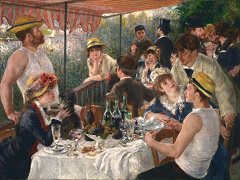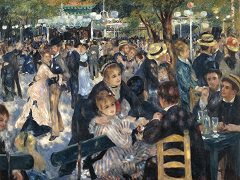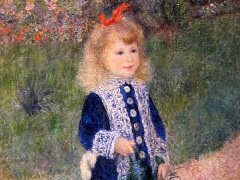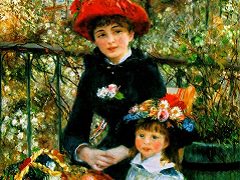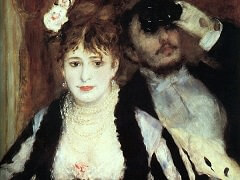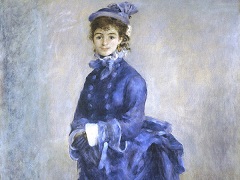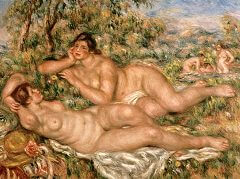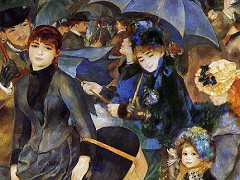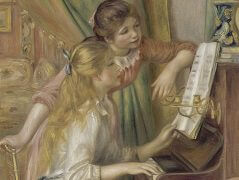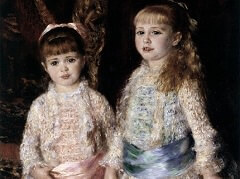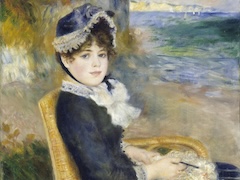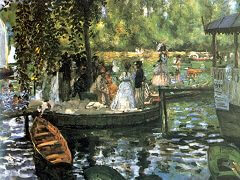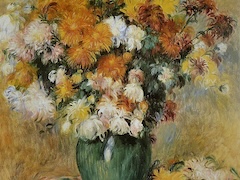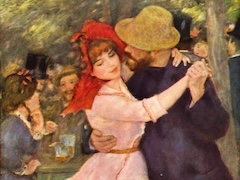Madame Charpentier and Her Children - by Pierre-Auguste Renoir
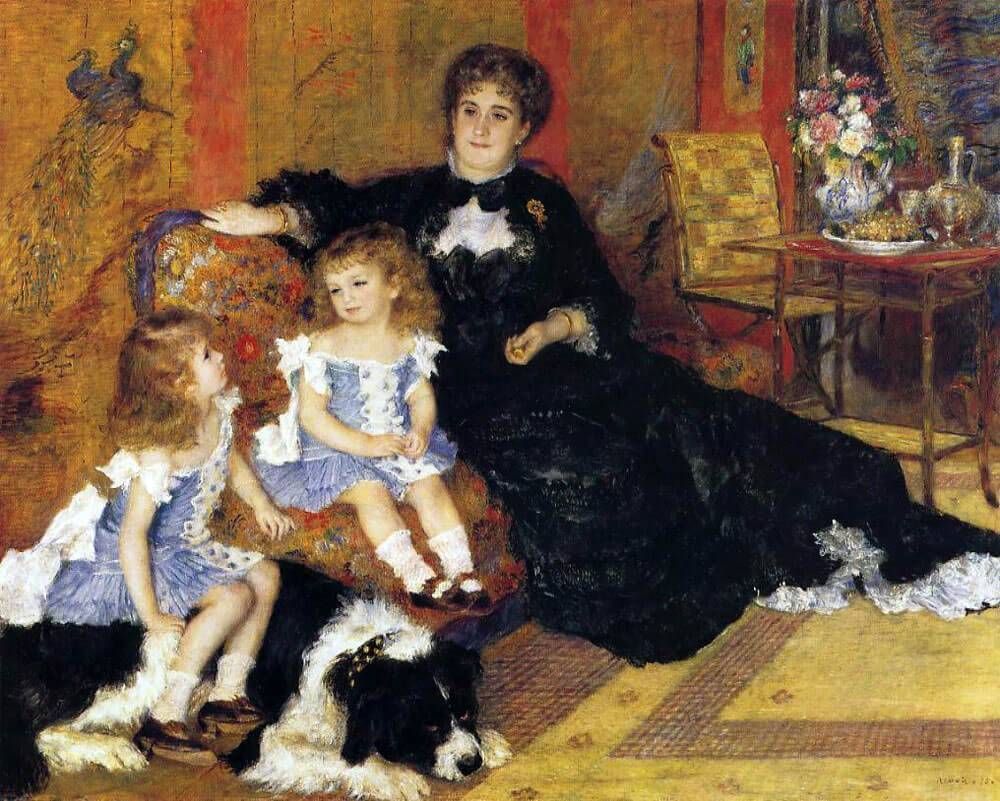
A brilliant and attractive woman, with great influence in the world of letters, art, and politics, Madame Charpentier became interested in the Impressionists in the late 1870s, and particularly in Renoir. When he was commissioned to paint her - one of the most celebrated hostesses in Paris - at home with her children, Renoir seized opportunity to make an impressive showing in the Salon of 1879, and thus encourage the reception of his work in circles that could afford to pay for it.
The plate opposite is, in a sense, the result of a wonderfully successful compromise. Here is that rare hybrid, a picture that meets the requirements of society portraiture, while at the same time engaging the artist fully in terms of his own personal creativeness. The patron, understandably, subordinates his interests in pictorial values to his hopes for an agreeable presentation of those qualities in his family that are precious to him. And certainly, as a charming revelation of a particular woman and her children, of her personality and the quality of her home, this picture is an unqualified success, and was so regarded at the Salon.
But it is also successful as a Renoir: full of grace and freshness, and arranged with a freedom rather unusual in a picture in which the various elements are not the choice of the artist at liberty in his own studio. Boldly, the artist concentrates attention on the children and the dog, who rolls his eyes in mock anguish over the weight on his back. In contrast to these attractions, through the placing of the figures and the perspective of the rug, the eye is led to the upper right corner, where there is a grouping of handsomely painted details, and an exit into the distance. To lend stability to the canvas and localize the vision, the prominent and richly varied black of the dress is placed in the center of the composition, taking the eye, by means of an animated silhouette, to the edge at the right.
Black and white, in the dress and in the dog, provide one major color motif; blue, another. To set them off, coral panels appear in the background, and the other areas of the canvas embody nuances of all the major colors.

